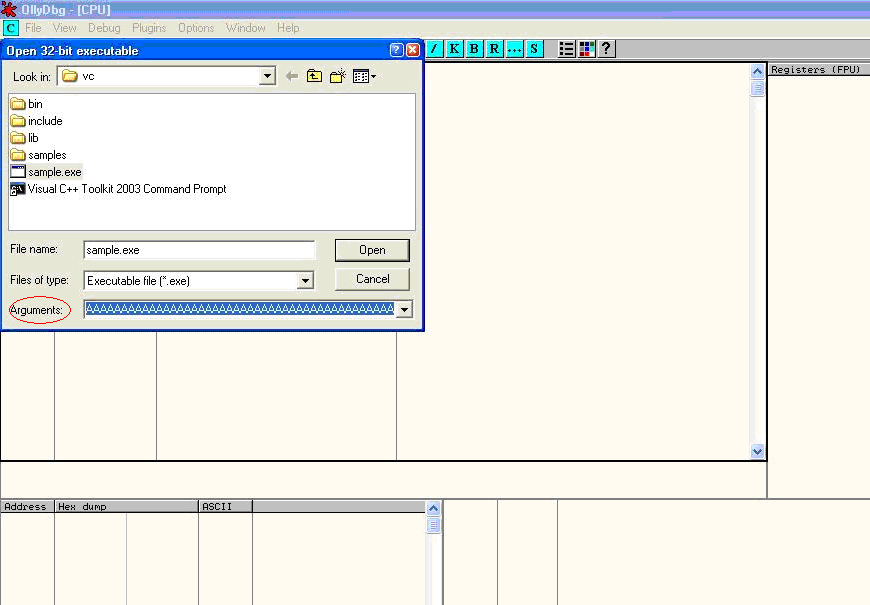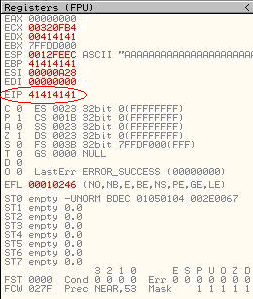栈溢出测试
Summary
Stack overflows occur when variable size data is copied into fixed length buffers located on the program stack without any bounds checking. Vulnerabilities of this class are generally considered to be of high severity since their exploitation would mostly permit arbitrary code execution or Denial of Service. Rarely found in interpreted platforms, code written in C and similar languages is often ridden with instances of this vulnerability. In fact almost every platform is vulnerable to stack overflows with the following notable exceptions:
- J2EE – as long as native methods or system calls are not invoked
- .NET – as long as /unsafe or unmanaged code is not invoked (such as the use of P/Invoke or COM Interop)
- PHP – as long as external programs and vulnerable PHP extensions written in C or C++ are not called can suffer from stack overflow issues.
Stack overflow vulnerabilities often allow an attacker to directly take control of the instruction pointer and, therefore, alter the execution of the program and execute arbitrary code. Besides overwriting the instruction pointer, similar results can also be obtained by overwriting other variables and structures, like Exception Handlers, which are located on the stack.
How to Test
Black Box testing
The key to testing an application for stack overflow vulnerabilities is supplying overly large input data as compared to what is expected. However, subjecting the application to arbitrarily large data is not sufficient. It becomes necessary to inspect the application’s execution flow and responses to ascertain whether an overflow has actually been triggered or not. Therefore, the steps required to locate and validate stack overflows would be to attach a debugger to the target application or process, generate malformed input for the application, subject the application to malformed input, and inspect responses in a debugger. The debugger allows the tester to view the execution flow and the state of the registers when the vulnerability gets triggered.
On the other hand, a more passive form of testing can be employed, which involves inspecting assembly code of the application by using disassemblers. In this case, various sections are scanned for signatures of vulnerable assembly fragments. This is often termed as reverse engineering and is a tedious process.
As a simple example, consider the following technique employed while testing an executable “sample.exe” for stack overflows:
#include<stdio.h>
int main(int argc, char *argv[])
{
char buff[20];
printf("copying into buffer");
strcpy(buff,argv[1]);
return 0;
}
File sample.exe is launched in a debugger, in our case OllyDbg.

Since the application is expecting command line arguments, a large sequence of characters such as ‘A’, can be supplied in the argument field shown above.
On opening the executable with the supplied arguments and continuing execution the following results are obtained.

As shown in the registers window of the debugger, the EIP or Extended Instruction Pointer, which points to the next instruction to be executed, contains the value ‘41414141’. ‘41’ is a hexadecimal representation for the character ‘A’ and therefore the string ‘AAAA’ translates to 41414141.
This clearly demonstrates how input data can be used to overwrite the instruction pointer with user-supplied values and control program execution. A stack overflow can also allow overwriting of stack-based structures like SEH (Structured Exception Handler) to control code execution and bypass certain stack protection mechanisms.
As mentioned previously, other methods of testing such vulnerabilities include reverse engineering the application binaries, which is a complex and tedious process, and using fuzzing techniques.
Gray Box testing
When reviewing code for stack overflows, it is advisable to search for calls to insecure library functions like gets(), strcpy(), strcat() etc which do not validate the length of source strings and blindly copy data into fixed size buffers.
For example consider the following function:-
void log_create(int severity, char *inpt) {
char b[1024];
if (severity == 1)
{
strcat(b,”Error occurred on”);
strcat(b,":");
strcat(b,inpt);
FILE *fd = fopen ("logfile.log", "a");
fprintf(fd, "%s", b);
fclose(fd);
. . . . . .
}
From above, the line strcat(b,inpt) will result in a stack overflow if inpt exceeds 1024 bytes. Not only does this demonstrate an insecure usage of strcat, it also shows how important it is to examine the length of strings referenced by a character pointer that is passed as an argument to a function; In this case the length of string referenced by char *inpt. Therefore it is always a good idea to trace back the source of function arguments and ascertain string lengths while reviewing code.
Usage of the relatively safer strncpy() can also lead to stack overflows since it only restricts the number of bytes copied into the destination buffer. If the size argument that is used to accomplish this is generated dynamically based on user input or calculated inaccurately within loops, it is possible to overflow stack buffers. For example:-
void func(char *source)
{
Char dest[40];
…
size=strlen(source)+1
….
strncpy(dest,source,size)
}
where source is user controllable data. A good example would be the samba trans2open stack overflow vulnerability (http://www.securityfocus.com/archive/1/317615).
Vulnerabilities can also appear in URL and address parsing code. In such cases, a function like memccpy() is usually employed which copies data into a destination buffer from source until a specified character is not encountered. Consider the function:
void func(char *path)
{
char servaddr[40];
…
memccpy(servaddr,path,'\');
….
}
In this case the information contained in path could be greater than 40 bytes before ‘\’ can be encountered. If so it will cause a stack overflow. A similar vulnerability was located in Windows RPCSS subsystem (MS03-026). The vulnerable code copied server names from UNC paths into a fixed size buffer until a ‘\’ was encountered. The length of the server name in this case was controllable by users.
Apart from manually reviewing code for stack overflows, static code analysis tools can also be of great assistance. Although they tend to generate a lot of false positives and would barely be able to locate a small portion of defects, they certainly help in reducing the overhead associated with finding low hanging fruits, like strcpy() and sprintf() bugs. A variety of tools like RATS, Flawfinder and ITS4 are available for analyzing C-style languages.
Tools
- OllyDbg: "A windows based debugger used for analyzing buffer overflow vulnerabilities" - http://www.ollydbg.de
- Spike, A fuzzer framework that can be used to explore vulnerabilities and perform length testing - http://www.immunitysec.com/downloads/SPIKE2.9.tgz
- Brute Force Binary Tester (BFB), A proactive binary checker - http://bfbtester.sourceforge.net/
- Metasploit, A rapid exploit development and Testing frame work - http://www.metasploit.com
References
Whitepapers
- Aleph One: "Smashing the Stack for Fun and Profit" - http://insecure.org/stf/smashstack.html
- The Samba trans2open stack overflow vulnerability - http://www.securityfocus.com/archive/1/317615
- Windows RPC DCOM vulnerability details - http://www.xfocus.org/documents/200307/2.html

